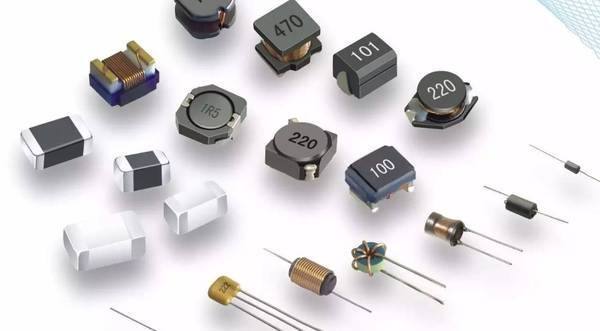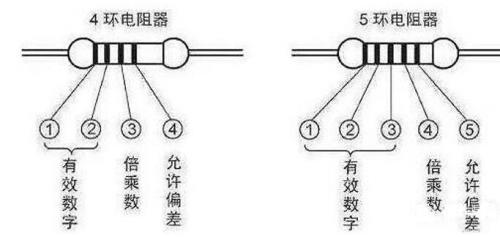I. Basic knowledge of electronic components
Electronic components are components of electronic components and small and medium-sized equipment and instrument equipment. They are often composed of multiple parts and can be universal in the same industry. Refers to household appliances, wireless communication, instrument panel and other industrial production of some parts, such as capacitance, audion, hairspring, accessories and other sub-components collectively. Basic knowledge of electronic components, as a procurement of electronic components, not only requires flexible business ability, but also needs to master some of the hardware of electronic components. Such as the classification of electronic components, model identification, use and other professional basic knowledge, can provide better and more professional procurement advice for enterprises. So let's take a look at some of the basics of electronic components.

II、Classification of electronic components
The basic parts used in the manufacture or assembly of electronic complete machines are called electronic components, which are independent individuals in electronic circuits.
1. Active components and passive components
Active element refers to the element that can stimulate and amplify, oscillate, control current or energy distribution and other active functions of electrical signal or even perform data operation and processing when energy supply is obtained. Active components include various transistors, integrated circuits (IC), video tubes and displays. Passive element is opposite to active element for, it is to cannot excite magnify to electric signal, oscillate wait, the response to electric signal is passive obedient, and electric signal passes electronic element according to original basic characteristic. The most common resistors, capacitors, inductors, and so on are passive components.
Active components and passive components active components correspond to active components. If an electronic component works with a power source inside it, the device is called an active device and requires a source of energy to perform its specific function. Active devices themselves consume electricity, and high-power active devices often have radiators. The counterpart of the passive element is the passive element. Resistance, capacitance and inductance components in the circuit through the signal can complete the specified function, do not need an external excitation power, so called passive devices. Passive devices consume very little power themselves or convert it into different forms of other energy.
Basic knowledge of electronic components - discrete components and integrated circuits
There are two main branches of the semiconductor industry: integrated circuits and discrete devices. Discrete components are relative to integrated circuits, semiconductor discrete devices, generally refers to semiconductor crystal diode, semiconductor triode for short, transistor and semiconductor special devices, is a single function, "minimum" components, no longer have other components within the functional unit. IC integrated circuit (IC integrated circuit) is an electronic component with circuit function, which combines the transistors, resistance-capacitance-sensing elements and wiring interconnections required in a class of circuits, and makes a small piece or several small pieces of semiconductor chips or medium substrates and encapsulates them as a whole.

III. Identification of common electronic components
1, resistance
Resistance of basic knowledge of electronic components. Resistors, commonly referred to as resistors, are the most commonly used electronic components in electronic devices. Resistance is represented in circuits by "R" and numerals. For example, R13 represents the resistance numbered 13. The main functions of resistors in circuits are shunt, current limiting, partial voltage bias, filtering (used in combination with capacitors) and impedance matching.
Parameter identification: the unit of resistance is ohm (), the multiplier unit is: kilo-ohm (K), megohm (M), etc. The conversion method is: 1 megohm (m)=1000 kao (k)=1000000 ohms. There are three methods for the parameter marking of resistance, namely, the straight standard method, the color standard method and the number standard method.
1.1, number scale method is mainly used for chip patch and other small volume circuit, such as: 472 denotes 47×100 = 4.7K; So 103 is 10,000 omega (10 with three zeros in it), which is 10k omega
1.2 Color ring labeling is the most frequently used method. The first color ring represents the largest digit of the resistance value, the second color ring represents the second digit, the third color ring represents the resistance value should have several zeros, and the fourth color ring represents the error of the resistance value.

2, capacitance
Basic knowledge of capacitance of electronic components. A capacitor is a component consisting of two metal films held together and separated by an insulating material. Capacitance in the circuit is generally represented by "C" plus numbers, such as C223 means the number of 223 capacitor capacitance is mainly separated by direct flow of ac. The main parameters of the capacitor are also two, nominal capacitance and allowable error.
2.1 Nominal capacitance, refers to the capacitance marked on the capacitor, the size of the capacitance capacity is the size of the energy stored in the capacitance, the resistance of capacitance to ac signal is called capacitive reactance, it is related to the frequency and capacitance of AC signal. The capacitive reactance xc=1/2 F C (f for the frequency of the AC signal and C for the capacitance).
2.2 Identification method: The identification method of capacitance is basically the same as that of resistance, and there are three kinds of identification methods: direct standard method, color standard method and number standard method. The basic unit of capacitance is expressed as a Farad (F). Other units include milliways (MF), microways (UF), nano methods (NF), and leather methods (PF). Where: 1 Farad =103 milliways =106 microways =109 nanoways =1012 picomethods.
2.3 Direct scaling method: The capacity value of the capacitor with large capacity is directly marked on the capacitor, such as 2200 uF / 10V
2.4 Numerical representation: Generally, the capacity is represented by three digits, the first two digits are significant digits, and the third digit is multiplier. For example, 102 means 10×102pf= 1000PF.
3, inductance
Basic knowledge of inductance of electronic components. Inductance coils are made by winding an insulated wire around an insulated skeleton for a certain number of turns. Dc can go through the coil, dc resistance is the resistance of the wire itself, the voltage drop is very small; When the AC signal passes through the coil, the two ends of the coil will generate a self-induction electromotive force.
The direction of the self-induction electromotive force is opposite to the direction of the applied voltage, which impedes the passing of ac. Therefore, the characteristic of inductance is the on-DC resistance to AC. The higher the frequency is, the greater the coil impedance will be. Inductance and capacitance can form oscillation circuit in the circuit. Inductance is often expressed as "L" plus a number in a circuit. For example, L3 represents the inductance with the number 3. Inductance generally has the straight standard method and the color standard method, the color standard method is similar to the resistance. The basic unit of inductance is: H (H). The conversion unit is: 1h= 103MH =106uh.
4. Crystal diode
The main characteristic of the diode is unidirectional conductivity, that is, under the action of the forward voltage, the conduction resistance is very small; Under the action of the reverse voltage, the conduction resistance is extremely large or infinite. Crystal diodes are used to detect radio waves in radios, to convert alternating current into pulsating direct current in power conversion circuits, and to act as non-contact switches in digital circuits. Crystal diodes can be divided into: rectifier diodes (such as 1N4004), isolation diodes (such as 1N4148), Schottky diodes (such as BAT85), light-emitting diodes, voltage regulators, and so on.
4.1, identification method: identification of a diode is very simple, small power diode n pole (cathode), the diode looks mostly USES 1 kind of color ring marking out, some diodes also use special symbols to represent a p (positive) or n pole (anode), also have use symbols for "p", "n" to determine of polarity of the diode. The positive and negative poles of the LED can be identified from the length of the pin, with the long leg being positive and the short leg being negative.
4.2 Main parameters: Rated forward working current refers to the maximum forward current allowed to pass when the diode works continuously for a long time. Because the current through the pipe will make the core heat, the temperature rises, the temperature exceeds the allowable limit (silicon tube is about 140, germanium tube is about 90), it will make the core overheat and damage. The highest reverse working voltage, the reverse voltage applied at both ends of the diode reaches a certain value, the tube will be broken down, loss of unidirectional conductivity. In order to ensure the safety of use, the maximum reverse operating voltage is stipulated. Reverse current refers to the reverse current flowing through the diode under the action of specified temperature and maximum reverse voltage. The lower the reverse current, the better the performance of the one-way guide. It is worth noting that the reverse current has a close relationship with temperature. For every 10 increase in temperature, the reverse current doubles.





